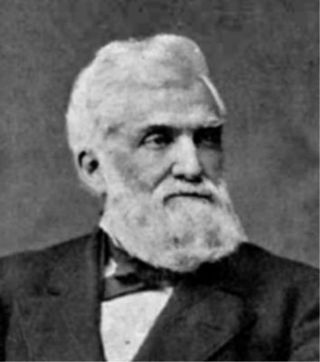
The lieutenant governor of Illinois is the second highest executive of the State of Illinois. In Illinois, the lieutenant governor and governor run on a joint ticket and are directly elected by popular vote. Gubernatorial candidates select their running mates when filing for office and appear on the primary election ballot together. When the governor of Illinois becomes unable to discharge the duties of that office, the lieutenant governor becomes acting governor. If the governor dies, resigns or is removed from office, the lieutenant governor becomes governor. Under the Illinois Constitution, the Attorney General is next in line of succession to the Governor's office after the lieutenant governor, but does not succeed to the lieutenant governor's office. From the impeachment of Rod Blagojevich in 2009, until the inauguration of Sheila Simon in 2011, Attorney General Lisa Madigan would have become governor if Pat Quinn had vacated the office. Historically, the lieutenant governor has been from either the Democratic Party or Republican Party. The current lieutenant governor is Democrat Juliana Stratton.

John Lourie Beveridge was the 16th Governor of Illinois, serving from 1873 to 1877. He succeeded the recently elected Richard J. Oglesby, who resigned to accept a Senate seat. Beveridge previously served in the Army during the American Civil War, becoming colonel of the 17th Illinois Cavalry in 1864. He was brevetted to brigadier general in March 1865.

Michael Joseph Howlett Sr. was an American politician who served as the 24th Illinois Auditor of Public Accounts and 33rd Illinois Secretary of State. He was the Democratic nominee for Governor of Illinois in the 1976 Illinois gubernatorial election.

The 2010 Illinois gubernatorial election took place on November 2, 2010. Incumbent Democratic Governor Pat Quinn was elected to a full term in office, having become governor in 2009 following the impeachment and removal of Governor Rod Blagojevich. Quinn was elected as the Democratic nominee, the Illinois Green Party nominee was attorney and 2006 nominee Rich Whitney, the Republican nominee was State Senator Bill Brady, the Libertarian Party nominee was Lex Green, and Scott Lee Cohen ran as an independent.
The 1884 Democratic National Convention was held July 8–11, 1884 and chose Governor Grover Cleveland of New York their presidential nominee with the former Governor Thomas A. Hendricks of Indiana as the vice presidential nominee.

The 1994 Illinois gubernatorial election was held on November 8, 1994. Incumbent Republican Governor Jim Edgar won reelection in the largest landslide in over a century, after the elections of 1818 and 1848.

The 1986 Illinois gubernatorial election was held on November 4, 1986. Republican candidate James R. Thompson won a fourth term in office, defeating the Illinois Solidarity Party nominee, former United States Senator Adlai Stevenson III, by around 400,000 votes.

The 1856 Illinois gubernatorial election was the eleventh election for this office. Democratic governor Joel Aldrich Matteson did not seek re-election. Former Democratic Congressman William Henry Bissell was nominated by the newly formed Republican Party at the Bloomington Convention. Former Whig Mayor of Chicago Buckner S. Morris was nominated on the Know-Nothing Party ticket.

The 1860 Illinois gubernatorial election was the twelfth election for this office. Republican governor William Henry Bissell died early in his term, and incumbent governor John Wood did not seek re-election. Former Democratic Congressman and former Clerk of the U.S. House James C. Allen was the Democratic nominee. A Number of third-party candidates ran as well; none received over one percent of the vote. At this time in Illinois history the Lieutenant Governor was elected on a separate ballot from the governor. This would remain the case until the adoption of the 1970 constitution.

The 1990 Illinois gubernatorial election was held on November 6, 1990 to elect the governor and lieutenant governor of Illinois. The incumbent Governor Jim Thompson chose to retire instead of seeking reelection to a fifth term. The Republican nominee, Secretary of State Jim Edgar, narrowly defeated the Democratic nominee, Attorney General Neil Hartigan, by about 80,000 votes out of the over 3.2 million cast.

The 1872 Illinois gubernatorial election was the fifteenth election for this office. Republican nominee, Former Governor Richard J. Oglesby defeated the Democratic and Liberal Republican nominee Gustavus Koerner. B. G. Wright represented Independent Democrats unwilling to ally with Liberal Republicans. Oglesby had agreed to run for the Governorship but to resign upon being elected so that Lt. Governor John Lourie Beveridge could assume the office. Oglesby was in turn appointed to the U.S. Senate.

The 1972 Illinois gubernatorial election was held in Illinois on November 7, 1972. Incumbent first-term Republican governor Richard B. Ogilvie lost reelection in an upset to the Democratic nominee, Dan Walker.

Elections were held in Illinois on Tuesday, November 4, 1986.

Elections were held in Illinois on Tuesday, November 3, 1936.

The 1928 Illinois gubernatorial election was held on November 6, 1928. Incumbent two-term Republican Governor Len Small was defeated in the Republican primary. Republican nominee Louis Lincoln Emmerson defeated Democratic nominee Floyd E. Thompson with 56.76% of the vote.

The 1920 Illinois gubernatorial election was held on November 2, 1920.

The 1880 Illinois gubernatorial election was held on November 2, 1880.

The 1884 Illinois gubernatorial election was held on November 4, 1884.

The 1924 Illinois lieutenant gubernatorial election was held on November 4, 1924. Incumbent Republican Lieutenant Governor Fred E. Sterling won a landslide reelection.

The 1928 Illinois lieutenant gubernatorial election was held on November 6, 1928. Incumbent Republican lieutenant governor Fred E. Sterling was reelected to a third consecutive term.














